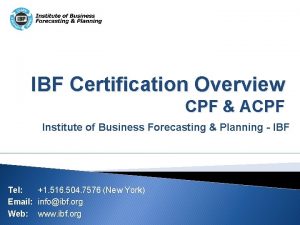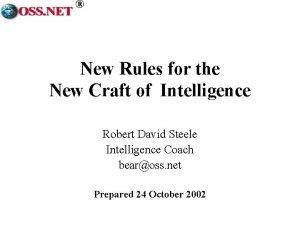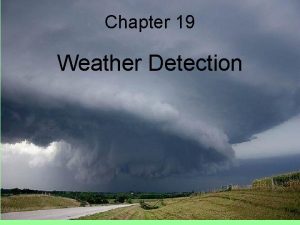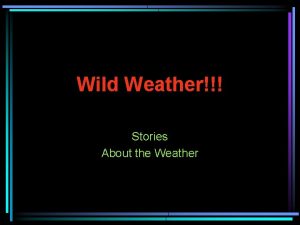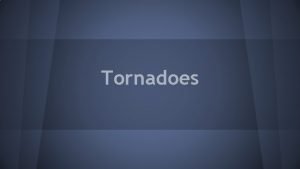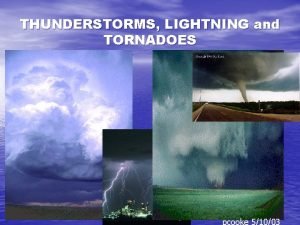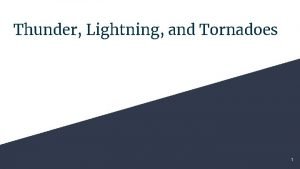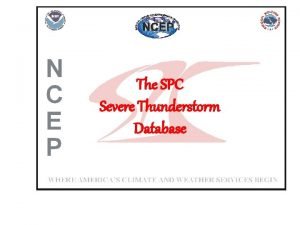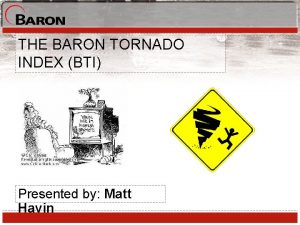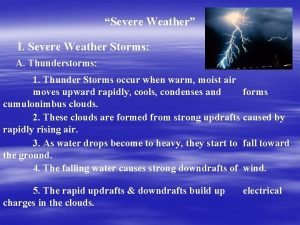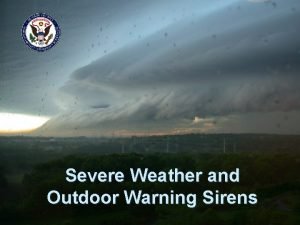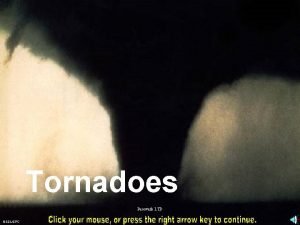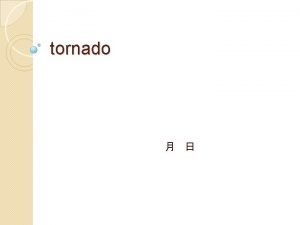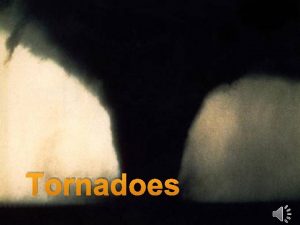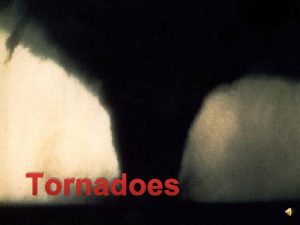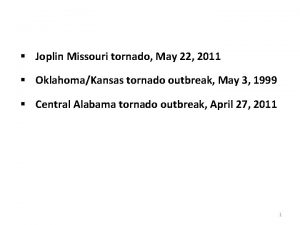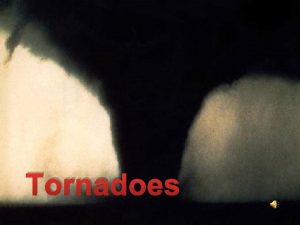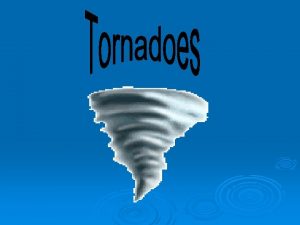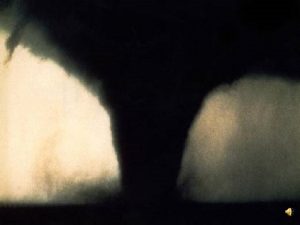Tornado Detection Limitations David Craft Weather Forecaster Overview




















- Slides: 20

Tornado Detection & Limitations David Craft Weather Forecaster

Overview • Background • Doppler Radar Limitations • Examples • Other Tornado Detection Capabilities • Prepare & React Appropriately • References • Bottom Line

National Average Lead Times & Probability of Detection

Weather Radar Basics (NWS, 2003)

Weather Radar Basics Base Reflectivity Storm Relative Velocity

Non-Supercell Tornadoes • Probably more frequent in Western U. S. • Often unseen or unreported • Form early in thunderstorm lifecycle • May form rapidly near surface then extend upward • May form simultaneously at low and mid levels • Shallow and/or narrow, brief

Spin-Up Tornado Formation • Cause 1: shear instabilities stretched upward by updraft (Wakimoto et. al. , 1988) • Cause 2: horizontal vorticity tilted to vertical by updraft (NOAA, 1999)

Doppler Radar Limitations All Doppler radars have difficulty detecting circulations. . . • Too far from radar – Beam broadening – Overshooting • Too close to radar • Blocked from radar view • Dissipate too quickly

Limitation 1: Too Far From the Radar Cause 1: Beam Broadening (WSR-88 D Operational Support Facility and Titan Systems Group, July 1998)

Limitation 1: Too Far From the Radar Cause 2: Overshooting Angles Used Radar Coverage

Limitation 2: Too Close to the Radar Cone of Silence

Limitation 3: Blocked From View Radar Coverage at 10, 000 Ft

Limitation 4: Dissipate Too Quickly • Many spin-ups may last only a few minutes • Complete atmosphere scan may take 5 or 6 minutes • Even when detected, spin-ups frequently dissipate before a warning can reach people • New scan strategies will shrink scans to 4. 1 minutes

Example 1: Spin-Up Below Cumulus Cloud Photo 1 Photo 3 Photo 2 Photo 4

Example 2: Spin-Up Below Thunderstorm

Other Tornado Detection Capabilities • Storm Prediction Center guidance • Weather models • Satellites, profilers, soundings, upper-air data, surface obs • Storm spotters • News media, law enforcement and public reports

Prepare & React Appropriately • FEMA’s tornado safety tips brochure: www. fema. gov/hazards/tornadoes/tornadof. shtm • Watch for small tornadoes with all thunderstorms • U. S. hazards assessment • Severe wx outlook, mesoscale discussions, watches • Hazardous wx outlook & warnings • Use NOAA weather radios • Report tornadoes to NWS, if safely possible

Bottom Line • WSR-88 D’s do a good job at what they’re designed to do: detect strong mid-level circulations • All weather radars have limitations • Small tornadoes frequently exploit these limitations in New Mexico • NWS forecasters use all available resources to overcome tornado detection limitations • Weatherwise media & public can prepare for this dangerous threat and react appropriately when tornadoes strike

References • NOAA, 1999: Thunderstorms…tornadoes…lightning… nature’s most violent storms. A preparedness guide. NOAA/PA #99050, ARC 1122, 16 pp. Cited 2004. [Available online at http: //www. nws. noaa. gov/om/brochures/ttl. pdf]. • NWS, cited 2003: NWS radar FAQs page. [Available online at http: //weather. noaa. gov/radarinfo/radarinfo. html]. • Wakimoto, R. M. , and Wilson, J. W. , 1988: Non-supercell tornadoes. Mon. Wea. Rev. , 117, 1113 -1140. • WSR-88 D Operational Support Facility and Titan Systems Group, July 1998: WSR-88 D Principal User Processor Operator Handbook. Volume II, Applications Terminal, Software Version 10. 0, 267 pp.

Tornado Detection & Limitations Questions for David Craft? David. Craft@noaa. gov
 Ibf forecasting
Ibf forecasting Robert david steele the new craft of intelligence
Robert david steele the new craft of intelligence Lightening radar
Lightening radar Station model
Station model Poem whether the weather
Poem whether the weather Poem on seasons
Poem on seasons It's cloudy and windy
It's cloudy and windy Weather vs whether
Weather vs whether Heavy weather by weather report
Heavy weather by weather report Capital weather gang weather wall
Capital weather gang weather wall Tornado story
Tornado story Kentucky tornado alley
Kentucky tornado alley Tornado formation video
Tornado formation video Stovepipe tornado
Stovepipe tornado What is tornado
What is tornado Spc database
Spc database What is a tornado index
What is a tornado index Comparison words
Comparison words Tornado classification
Tornado classification Dupage county tornado siren
Dupage county tornado siren Sentence about tornado
Sentence about tornado
